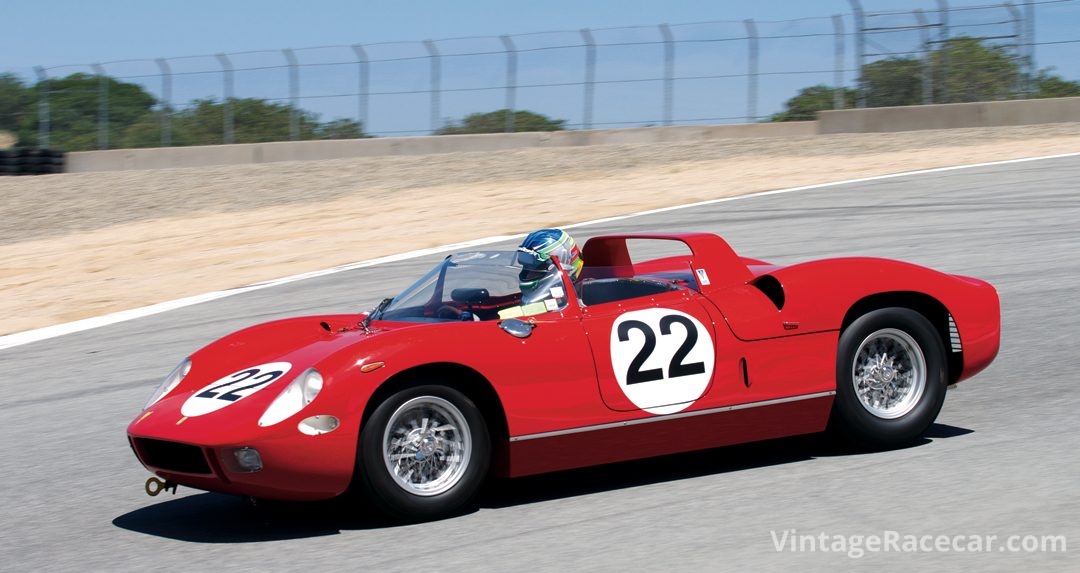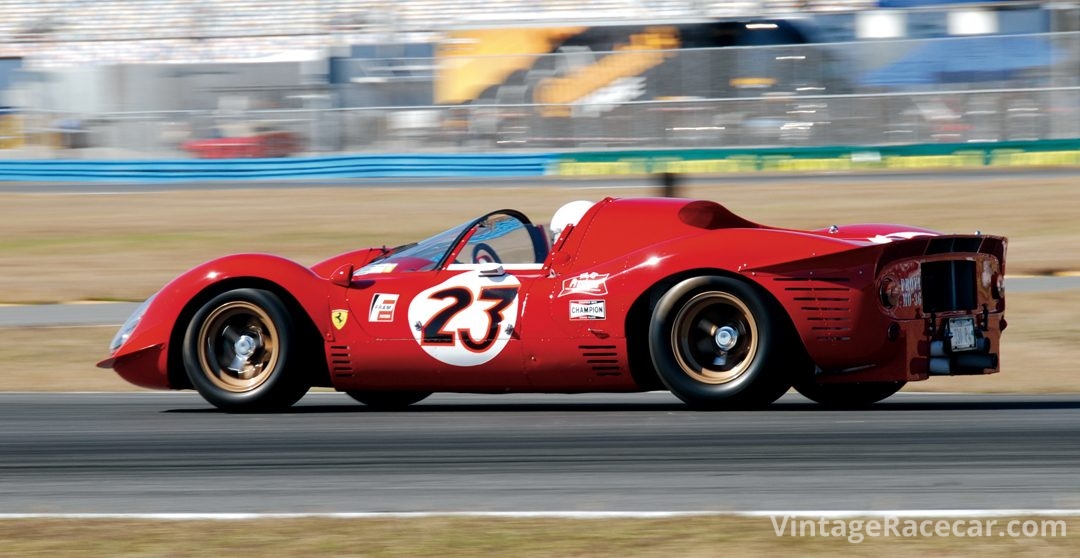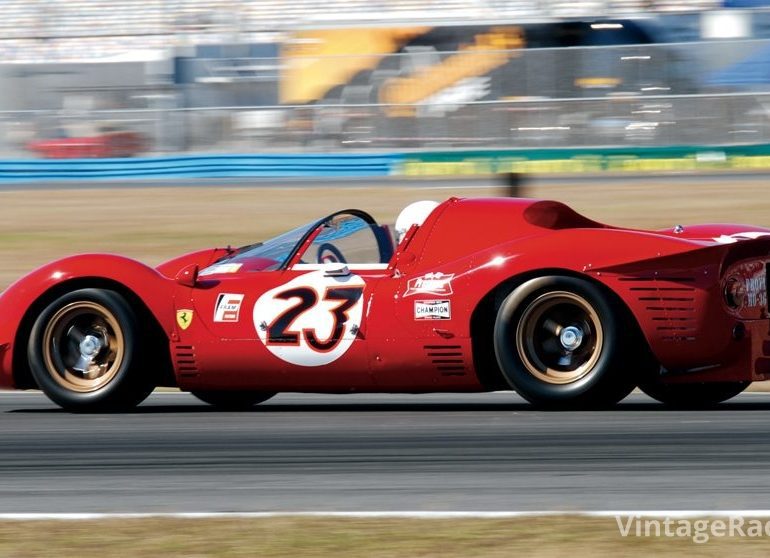The FIA sports prototypes were some of the most exciting purpose-built racing cars ever designed. They competed under the regulations set forth by the FIA (Federation International Automobile) in the International Championship of Makes from 1964-1971, and the World Championship of Makes from 1972-1981. The regulations changed somewhat as the years passed, 5.0-liter engines then 3.0-liter engines, etc., but the concept remained the same: To allow manufacturers to design the most fascinating, technically advanced sports racing cars the world had seen; Then have them compete in a World Championship that included racing in the great endurance races such as the 24 Hours of Le Mans, the 1,000 Kilometers of the Nürburgring, Spa and Monza, as well as the Targa Florio. Alfa Romeo, Alpine Renault, Ferrari, Ford, Lola, Matra and Porsche all designed very lightweight, successful sports prototypes to compete in the World Championship. From this came the Alfa Romeo, Tipo 33/12, Ferrari 512 M, Ford GT40, Matra 670 and Porsche 917. They were driven by the world’s best drivers at a time when Formula One drivers still enjoyed driving in sports car races. Today FIA sports prototypes qualify to race in many great historic events such as the Le Mans 24 Hour Classic, the Classic Endurance Series and the Rolex Monterey Motorsports Reunion. Due to their technology, great designs, eligibility and low production number, FIA sports prototypes have steadily been increasing in value.
1963 Ferrari 250P

At the end of the 1961 season there was a mutiny at Ferrari and many key people left, including engineer Giotto Bizzarini. Many wondered how Ferrari would recover, but as car designs and race results show, it did not faze the team. A new, young, engineer named Mauro Forghieri, came on board along with a new team of drivers that included John Surtees, Lodovico Scarfiotti and Mike Parkes. In November of 1962, the 250 P was designed, then introduced to the press at Monza in March of 1963. The 250 P was the first 12-cylinder, rear-engine racecar built by Ferrari. It had a tubular space frame chassis with a slightly longer wheelbase than the previous year’s 268 SP, but a shorter Pininfarina-designed body. The car used a derivative of the three-liter Testa Rossa engine mated to a five-speed, non-synchro gearbox with limited-slip differential. The 250 P also featured inboard rear brakes and other clever innovations. Only four cars were built. The debut for the new 250 P was the 12 Hours of Sebring, where Surtees and Scarfiotti handily won the race. The 250 P went on to win at the 1,000 Kilometers of the Nürburgring, as well as the 24 Hours of Le Mans, proving the
250 P to be a formidable racing car on the world stage that kept Ferrari on the top step for another season of World Championship of Makes competition.
1967 Ferrari 330 P4

For the 1967 racing season, Ferrari engineer Mauro Forghieri and his team continued to evolve the P2/P3 design of the previous years. Big changes were made that included a Piero Drogo body design for improved roofline airflow. The P4 was built as either a Berlinetta or a Spider. The tubular chassis had a wider track, but inboard disc brakes were discarded in favor of outboard brakes within the wheels. The wheels were a new, wider five-star design made out of magnesium by Campagnolo. The engine enjoyed a major redesign, which included a new 36-valve cylinder head atop a four-liter, fuel-injected, 12-cylinder. The old ZF gearbox was discarded in favor of a new five-speed gearbox built in house by Ferrari. Only three P4 cars were built, not counting the upgraded P3 or 412 P cars from the year before. The P4 was very fast, a quicker car than the previous year’s model and it won on its debut at the Daytona 24 Hours, finishing 1st and 2nd, while a 412 P came in 3rd. It was clearly quicker than the Ford GT40 MK2 that had beaten Ferrari at Le Mans the summer before. Ironically, one of Ferrari’s drivers was Chris Amon, who had driven the winning GT40 at Le Mans. The P4 went on to win the Monza 1000K round, again, with Amon and Bandini. Though it did finish 2nd to the new Ford GT40 MK4 design at Le Mans, the P4 went on to win the World Championship of Makes that season for Ferrari, over Ford and Porsche. Many say this is the most beautiful racing car ever built. It was another example of Ferrari’s design and engineering excellence—a sports prototype from the golden age of endurance racing.
Criteria Used For Assessing Valuations for this Guide:
- Degree of Originality
- Overall Condition, Restoration
- Technology, Design, Coachbuilder
- Production Numbers/Rarity
- Competition History
- Ownership History, Documentation
- Modern Event Eligibility
Regional Variances
The prices stated in this guide are based on U.S. values. The values of historic racing cars can vary as much as 25%-35% in other countries, depending on local market appeal, currency rates, import duties, and VAT. Most of the time, we are able to document known sales or closed escrows, as they say in real estate. When this is not possible, a logical estimate of the car’s value is given, based on its sales history and relationship to cars of its type.
The prices stated in this guide are based on U.S. values. The values of historic racing cars can vary as much as 25%-35% in other countries, depending on local market appeal, currency rates, import duties, and VAT.
LEVEL |
VALUATION CATEGORIES |
|---|---|
I |
The best combination of all criteria. |
II |
Satisfies mid-range of criteria. |
III |
In need of restoration. Meets only a few points of criteria |




